Did You See The Food Label?
Navigating through supermarkets and quaint little shops, observing people engaging in their grocery quests, I noticed a curious trend – a vast majority paid scant attention to the intricate details inscribed on the product labels. This realization sparked an idea, a notion to embark on an in-depth exploration. The result? The genesis of this blog post, conceived not only to guide you on the art of reading labels but, more importantly, to unravel the intricacies and empower you with the knowledge to make informed choices, steering towards the epitome of health in your selections.
In our health-conscious world, it’s more important than ever to know what we’re putting into our bodies. Food labels can be a powerful tool in making informed and healthy choices. Let's start this and detail it!
Empower Your Health Journey – Explore My Free Apps for a Vibrant, Healthier Lifestyle Today!
The Importance of Food Labels
Food labels are crucial for consumers to make informed choices. Whether you have food allergies, are watching your nutrient intake, or simply want to eat healthier, understanding food labels is key. It's not just about calories – it's about the quality of what you eat.
Moreover, for those monitoring their nutrient intake—perhaps due to medical reasons, fitness goals, or general health awareness—food labels offer a transparent view of what's inside their food. This information is not just about counting calories; it’s about understanding the nutritional profile of a product. Knowing the amounts of fats, carbohydrates, proteins, vitamins, and minerals helps in managing dietary needs and can significantly impact one's overall well-being.
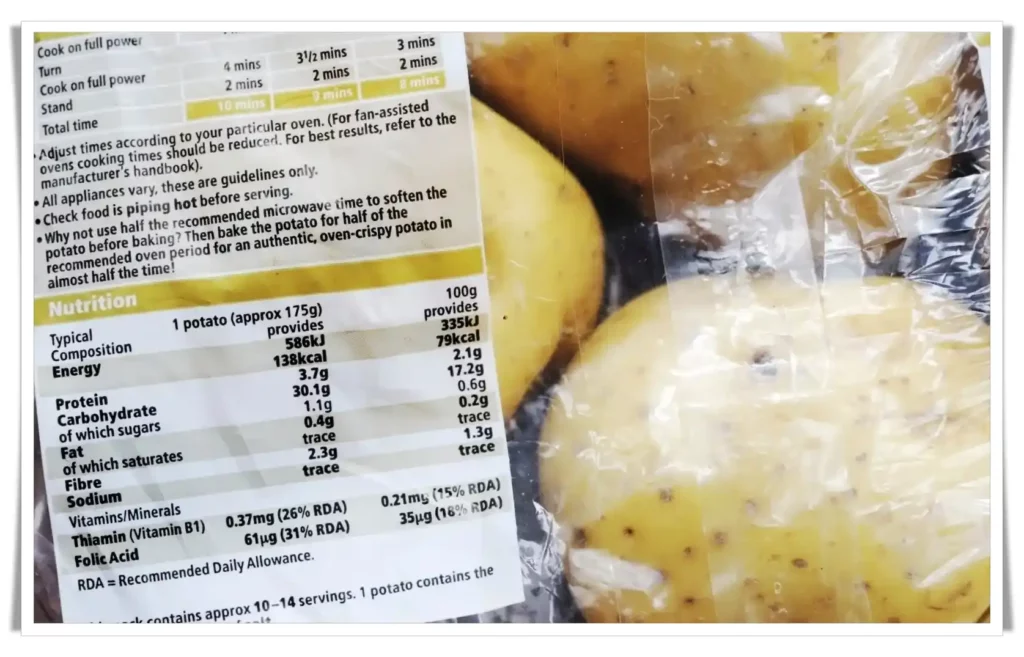
Beyond individual health concerns, food labels play a broader role in promoting a healthier lifestyle. They encourage more mindful eating by shedding light on the quality of the ingredients used. This includes highlighting the presence of preservatives, artificial colors, added sugars, or trans fats, which are often found in processed foods. By understanding these components, consumers can make better choices, opting for more natural and wholesome foods.
Additionally, food labels often include information about the product's origin, production methods, and whether it's organic or non-GMO. This level of detail can be particularly important for consumers interested in sustainability, ethical sourcing, and environmental impact.
Understanding the Basics: What’s on a Food Label?
Navigating the information on a food label is the first step in making informed dietary choices. Let's break down each element to understand what they signify and how they contribute to a better understanding of what you consume:
- Product Name: This is typically displayed prominently and gives you the basic identity of the product. It sometimes includes descriptors that give you a hint about the flavor, key ingredients, or preparation method.
- List of Ingredients: Ingredients are listed in descending order by weight. This means that the first few ingredients are present in the largest quantities. This list is crucial for understanding the makeup of the product, helping you to avoid certain ingredients due to allergies, dietary restrictions, or personal preferences.
- Allergens: Food labels must clearly indicate if they contain common allergens like nuts, dairy, gluten, or shellfish. This is vital for those with allergies, as even trace amounts can trigger allergic reactions.
- Quantity of Certain Ingredients: Sometimes, food labels highlight the quantity of certain key ingredients, often expressed as a percentage. This is particularly useful for understanding the proportion of healthful components like whole grains, fruits, or specific nutrients.
- Best-Before Dates: These dates indicate how long the food is expected to retain its optimal quality and flavor. It's an important guide for consumers to ensure they consume products while they are at their best.
- Country of Origin: Knowing where a food product comes from can be important for those concerned with food miles, local sourcing, or quality standards in different countries.
- Nutritional Information: This section provides details on the nutritional content per serving, including calories, fats, carbohydrates, proteins, vitamins, and minerals. This data is vital for managing dietary needs like calorie intake, macronutrients, and micronutrients. It helps in assessing how a particular food fits into your overall diet, whether you’re tracking macros for fitness goals, managing medical conditions like diabetes, or ensuring a balanced intake of nutrients.
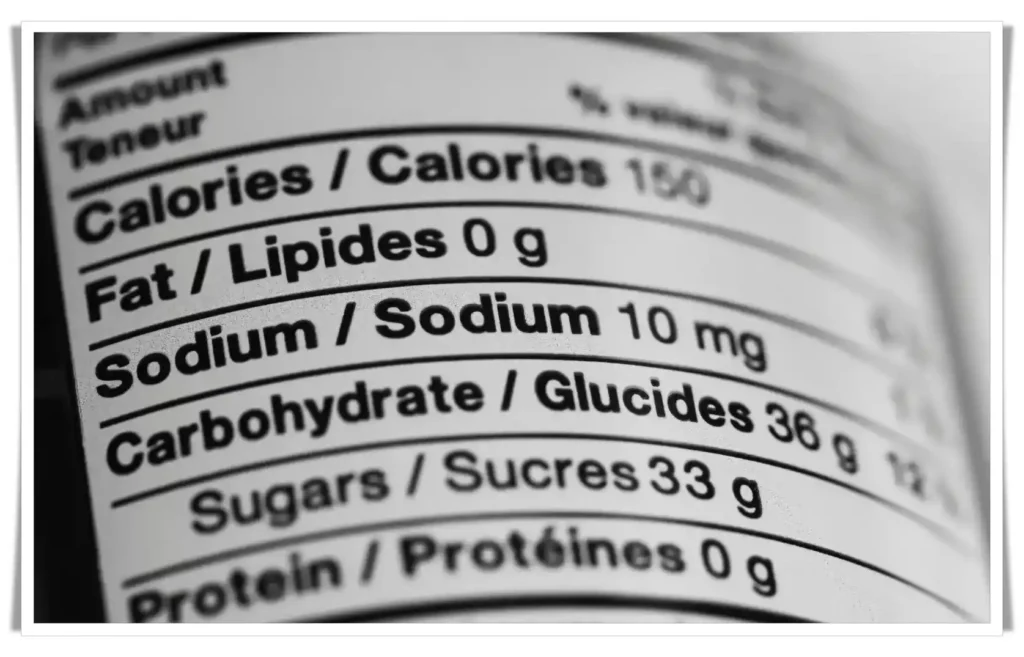
Deciphering Nutritional Information:
Understanding the nutritional declaration on food labels is key to making informed dietary decisions. This part of the label provides a detailed breakdown of the nutritional content, allowing you to assess how a particular food fits into your overall nutritional goals.
- Macronutrients:
- Fats: This includes total fats, saturated fats, trans fats, and sometimes unsaturated fats (like mono- and polyunsaturated fats). Fats are essential for energy, but the type and quantity matter for heart health and overall wellness.
- Carbohydrates: Listed as total carbs, this section often breaks down into dietary fiber and sugars (including added sugars). Carbohydrates are the body's primary energy source, but balancing simple (sugars) and complex (fibers) carbs is crucial for managing energy levels and digestive health.
- Proteins: Essential for muscle repair and growth, the protein content is especially important for athletes, people on certain diets, and for general body maintenance and repair.
- Micronutrients:
- This includes vitamins and minerals, such as Vitamin A, Vitamin C, calcium, and iron. These are vital for various body functions like immune response, bone health, and oxygen transport. Labels often show what percentage of the recommended daily intake a serving of the food provides.
- Caloric Content:
- The label also shows the number of calories per serving. This is crucial for managing weight, as balancing calorie intake with energy expenditure is key to either losing, gaining, or maintaining weight.
- Serving Size and Servings Per Container:
- Understanding the serving size and the number of servings per container helps you gauge how much you're actually consuming. What might seem like a small amount of calories or nutrients per serving could add up if you consume multiple servings.
- Daily Value Percentages:
- These percentages are based on a standard daily diet (often 2,000 calories). They help you understand how much a serving of the food contributes to your daily nutrient requirements.
Identifying Food Additives:
Food additives play a significant role in the modern food industry, and understanding their purpose and effects is essential for making informed dietary choices. These additives are substances added to food to enhance its flavor, appearance, or longevity. They can range from preservatives that prolong shelf life to colorants that improve a product's visual appeal, and from flavor enhancers that improve taste to stabilizers that maintain product consistency.
- Types of Food Additives:
- Preservatives: These prevent food spoilage from bacteria, molds, or yeast. Common preservatives include sodium benzoate and sulfur dioxide.
- Colorants: These are used to add or restore color in foods. Some are natural like beet juice, while others are synthetic.
- Flavor Enhancers: These additives enhance a food's existing flavors. Monosodium glutamate (MSG) is a well-known example.
- Emulsifiers: These help mix ingredients together that would normally separate, like oil and water.
- Stabilizers and Thickeners: These maintain the texture of food. Pectin and gelatin are common stabilizers.
- Sweeteners: These include artificial sweeteners like aspartame and natural sweeteners like stevia.
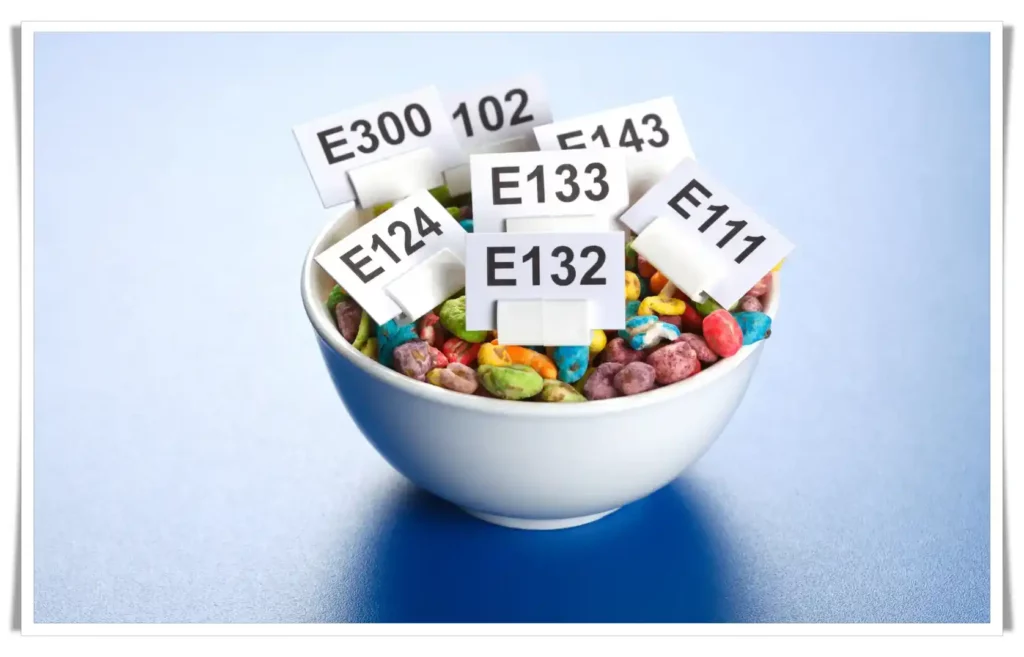
- Regulation and Safety:
- Food additives are rigorously regulated by food safety authorities like the FDA (Food and Drug Administration) in the United States and the EFSA (European Food Safety Authority) in Europe. These organizations assess the safety of additives and determine acceptable daily intakes.
- Generally, food additives are considered safe for the general population when consumed in typical amounts. However, some additives have been controversial and subject to ongoing research and debate regarding their health effects.
- Importance of Awareness:
- Some individuals may have sensitivities or allergies to certain additives, leading to reactions like headaches, digestive upset, or even more severe allergic responses.
- Being aware of additives is also important for those following specific dietary patterns, like vegan or gluten-free diets, as some additives may be derived from animal sources or contain gluten.
- How to Identify Them:
- Food additives are listed in the ingredients section of food labels. They can be named by their specific names or numbered with an 'E' code, especially in Europe.
- Reading food labels thoroughly can help you identify and avoid certain additives if needed.
In conclusion, while food additives are a common part of many processed foods and are generally safe, being informed about their presence and understanding their role can help you make choices that align with your health needs and dietary preferences. Whether it's avoiding specific additives due to sensitivities or choosing products with fewer artificial ingredients, knowledge of food additives empowers you to make decisions that are right for your health
Food Additives
Here's a table featuring the 20 most frequently utilized and less-than-healthy food additives, along with brief explanations of their roles and representations:
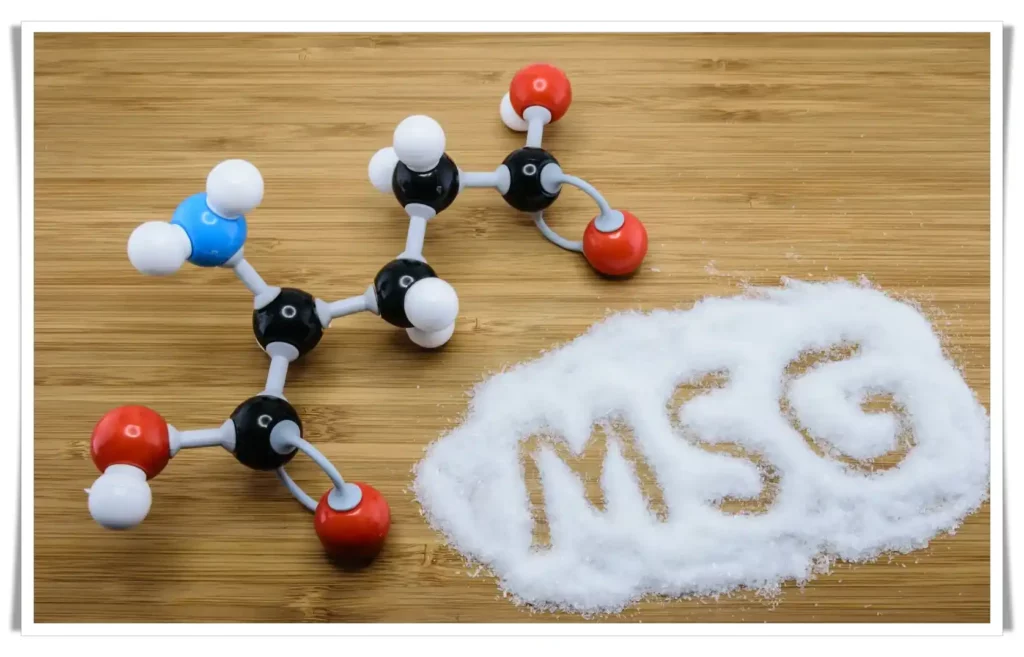
| Additive | Role and Representation |
|---|---|
| High-Fructose Corn Syrup (HFCS) | A sweetener linked to obesity and metabolic issues. Found in sodas, processed foods. |
| Monosodium Glutamate (MSG) | Enhances flavor but may cause headaches and nausea. Common in savory snacks. |
| Artificial Sweeteners (e.g., Aspartame) | Low-calorie alternatives linked to health concerns are present in diet products. |
| Trans Fat | Increases shelf life but raises bad cholesterol; often in processed and fried foods. |
| Sodium Nitrite | Preservative in processed meats, associated with potential health risks. |
| Butylated Hydroxyanisole (BHA) | Preserves fats but may be carcinogenic. Found in snacks, cereals. |
| Sodium Benzoate | Preservative in acidic foods, may form carcinogenic byproducts. |
| Artificial Colors (e.g., Red 40) | Adds visual appeal but linked to hyperactivity, common in candies and beverages. |
| Potassium Bromate | Improves dough elasticity but may be harmful; used in bread and baked goods. |
| Olestra | A fat substitute with side effects like digestive issues; found in certain snacks. |
| Carrageenan | Thickener and stabilizer in dairy and plant-based products; may cause inflammation. |
| Propyl Gallate | Preserves fats, but concerns about potential carcinogenicity. Used in processed foods. |
| Artificial Flavorings | Synthetic compounds mimicking natural flavors, present in various processed foods. |
| Sodium Aluminum Phosphate | Common leavening agent but may contribute to aluminum exposure concerns. |
| MSG Derivatives (e.g., Disodium Guanylate) | Flavor enhancers related to MSG, found in savory processed foods. |
| Hydrogenated Oils | Increases shelf life but raises bad cholesterol; in many processed and fried foods. |
| Potassium Sorbate | Preservative in beverages and sauces; may have potential health implications. |
| Butylated Hydroxytoluene (BHT) | Antioxidant in fats and oils; linked to health concerns in high doses. |
| Acesulfame Potassium | Artificial sweetener with controversial safety debates; used in various low-calorie products. |
| Sodium Metabisulfite | Preservative and antioxidant; potential allergen and associated with respiratory issues. |
Evaluating Salt, Sugar, and Fat Content:
A critical aspect of maintaining a balanced and healthy diet involves monitoring the intake of salt, sugar, and fat – three components commonly found in varying amounts in many food products. Food labels are invaluable in this regard, offering detailed insights into the content levels of these substances in each product.
- Salt (Sodium) Intake:
- Excessive salt consumption is linked to high blood pressure, heart disease, and stroke. Food labels often list sodium content rather than salt directly, but it's important to understand the conversion (1 gram of sodium equals approximately 2.5 grams of salt).
- The recommended daily limit for salt intake is generally about 6 grams for adults, but it can vary depending on age, health conditions, and lifestyle. Evaluating food labels can help you ensure you're not exceeding this limit, particularly in processed foods where salt content can be surprisingly high.
- Sugar Content:
- High sugar intake is a well-known risk factor for obesity, type 2 diabetes, and dental problems. Food labels distinguish between natural sugars (found in fruits, vegetables, and dairy) and added sugars. It's the added sugars that are of more concern health-wise.
- The World Health Organization recommends reducing added sugar intake to less than 10% of total energy intake, further suggesting a reduction to below 5% for additional health benefits. Reading food labels is essential to track and manage this intake, as added sugars are often hidden in various forms like sucrose, glucose, fructose, and corn syrup.
- Fat Content:
- Fats are essential for health, but the type and quantity matter. Saturated and trans fats are the ones to limit, as they can raise cholesterol levels and increase the risk of heart disease.
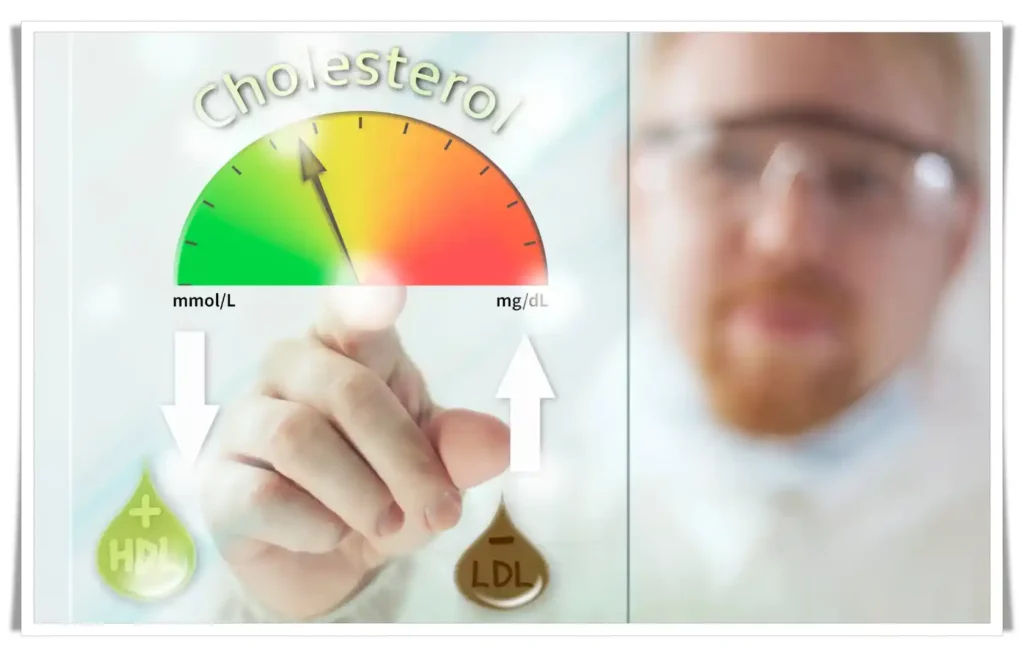
Food labels not only indicate the total fat content but also break it down into saturated, unsaturated, and sometimes trans fats. The goal is to limit saturated fats to less than 10% of your total daily calories and trans fats to as low as possible.
Tips for Making Healthier Choices:
Navigating the world of food choices can be overwhelming, but by paying attention to food labels and understanding what to look for, you can make healthier decisions that benefit your overall well-being. Here are some detailed tips to help you in this process:
- Check the First Few Ingredients:
- The ingredients on a food label are listed in order of their quantity in the product. The first few ingredients are the most prevalent. If items like whole grains, lean proteins, or natural sources are listed first, it's a good sign. However, if sugars, unhealthy fats, or artificial additives top the list, you might want to reconsider your choice.
- Opt for Whole Grain Products:
- Whole grain products are not only richer in essential nutrients like fiber, vitamins, and minerals but also help in maintaining digestive health and controlling blood sugar levels. Look for words like 'whole wheat,' 'brown rice,' or 'oats' as primary ingredients.
- Be Cautious with Sugar and Artificial Sweeteners:
- High sugar intake can lead to health issues like obesity, diabetes, and heart diseases. It's not just about the sugar listed as 'sugar'; it also includes high-fructose corn syrup, cane sugar, invert sugar, etc. Similarly, be wary of artificial sweeteners; though they are low in calories, some are linked to adverse health effects.
- Avoid Hydrogenated Fats, Sources of Trans Fats:
- Hydrogenated fats are a source of trans fats, which are detrimental to heart health. Trans fats raise bad cholesterol and lower good cholesterol. Avoid products with 'hydrogenated' or 'partially hydrogenated' oils in the ingredients list.
- Pay Attention to the Addition of Salt in Children's Diets:
- Excessive salt intake can lead to health issues like high blood pressure. For children, whose dietary needs differ from adults, it's especially important to monitor and limit their salt intake. Opt for low-sodium versions of products and be cautious with processed foods, which are often high in sodium.
- Choose Products Free from Artificial Colors:
- Artificial colors are common in processed foods, especially those targeted at children. However, some artificial colors have been linked to health issues and hyperactivity in children. Products with natural colorings, or better yet, no colorings at all, are a healthier choice.
Relevant Table:
| Nutrient | High Content | Low Content |
|---|---|---|
| Salt | >1.5g/100g | <0.3g/100g |
| Sugar | >22.5g/100g | <5g/100g |
| Saturated Fat | >5g/100g | <1.5g/100g |
| Total Fat | >17.5g/100g | <3g/100g |
FAQs About Food Labels:
- Q: How can I quickly identify healthy products?
- A: To quickly identify healthier products, start by looking at the number of ingredients. Generally, fewer ingredients signal a less processed product. Focus on items with whole, recognizable ingredients, and avoid those with long lists of additives or unfamiliar terms. Also, check the nutritional facts for low levels of saturated fats, added sugars, and sodium. Foods rich in fiber, proteins, vitamins, and minerals are often healthier choices.
- Q: What does 'natural' really mean on a label?
- A: The term 'natural' on food labels can be quite ambiguous, as it's not strictly defined or regulated in many cases. While it might imply that the product is minimally processed or doesn't contain artificial ingredients, this isn't always the case. Therefore, it's crucial to read the full list of ingredients. If a product labeled 'natural' contains preservatives or artificial additives, it may not be as 'natural' as it claims.
- Q: Can I trust 'low-fat' and 'fat-free' labels?
- A: While 'low-fat' and 'fat-free' products may seem like healthier options, they can sometimes be misleading. Often, when fat is reduced or removed, something else is added to compensate for the loss of flavor or texture, usually sugar or salt. It's important to read the nutritional information and ingredients list to understand what you're really consuming.
- Q: How important are expiration dates?
- A: Expiration dates, or 'use-by' dates, indicate when a product may start to lose its quality or freshness. It's a good guideline for perishable items, but many products can still be safe and edible past these dates. 'Best before' dates are more about quality than safety.
- Q: Should I avoid foods with long ingredient lists?
- A: Not necessarily. The length of the ingredient list doesn’t always determine the healthiness of a product. What’s more important is the type of ingredients. A long list that includes whole foods and familiar ingredients can still be healthy. However, a long list of additives, artificial ingredients, and processed substances might be a red flag.
- Q: Are organic foods always healthier?
- A: Organic labels indicate that the food was produced through approved methods that integrate cultural, biological, and mechanical practices promoting ecological balance and conserving biodiversity. While organic foods have lower pesticide residues and are often seen as more environmentally friendly, they are not always nutritionally superior to conventional foods. The decision to choose organic should be based on your personal preferences and values regarding agricultural practices and environmental impact.

Conclusion
Reading and understanding food labels is a skill that benefits your health and well-being. With these tips and knowledge, you can make informed choices about what you eat and maintain a balanced diet. Don't forget to check out my article “The Best Tips To Cook Healthy Recipes at Home” here and my video “What's in a Label? Digging Deeper Into Ice Cream Ingredients!” here for more insights. If you have any questions or experiences with reading food labels, please leave a comment below – I’d love to hear from you!
My resources:
Better Health Channel - Food additives
https://www.betterhealth.vic.gov.au/health/conditionsandtreatments/food-additives
American Heart Association - 9 Grocery Shopping Tips
https://www.heart.org/en/healthy-living/healthy-eating/cooking-skills/shopping/grocery-shopping-tips
Food labels, NHS
https://www.nhs.uk/live-well/eat-well/food-guidelines-and-food-labels/how-to-read-food-labels/
How To Read Food and Beverage Labels, National Institute on Aging
https://www.nia.nih.gov/health/how-read-food-and-beverage-labels




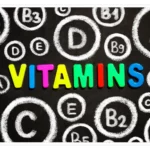
I admit that I don’t read the labels when I shop, but many times I read it at home and realized that I bought an unhealthy product, which I thought was OK in the store. I will carefully read the products to know what I am buying. Thanks for this article!
Thanks I have recently been looking for info about this subject for a while and yours is the greatest I have discovered so far However what in regards to the bottom line Are you certain in regards to the supply
Admin Excellent post, very informative.
My brother suggested I might like this blog He was totally right This post actually made my day You can not imagine simply how much time I had spent for this info Thanks
I loved even more than you will get done right here. The picture is nice, and your writing is stylish, but you seem to be rushing through it, and I think you should give it again soon. I’ll probably do that again and again if you protect this hike.
I loved even more than you will get done right here. The picture is nice, and your writing is stylish, but you seem to be rushing through it, and I think you should give it again soon. I’ll probably do that again and again if you protect this hike.
Excellent blog here Also your website loads up very fast What web host are you using Can I get your affiliate link to your host I wish my web site loaded up as quickly as yours lol
helloI like your writing very so much proportion we keep up a correspondence extra approximately your post on AOL I need an expert in this space to unravel my problem May be that is you Taking a look forward to see you
I simply could not go away your web site prior to suggesting that I really enjoyed the standard info a person supply on your guests Is going to be back incessantly to investigate crosscheck new posts
Its like you read my mind You appear to know so much about this like you wrote the book in it or something I think that you can do with a few pics to drive the message home a little bit but instead of that this is excellent blog A fantastic read Ill certainly be back
Ive read several just right stuff here Certainly price bookmarking for revisiting I wonder how a lot effort you place to create this kind of great informative website
Over the last week I found this incredible site, they provide top notch content for readers. The site owner has a talent for informing visitors. I’m excited and hope they maintain their superb skills.
This gateway is incredible. The splendid data displays the administrator’s earnestness. I’m overwhelmed and expect more such astounding material.
Wow, superb blog format! How long have you been blogging for?
you make running a blog glance easy. The full glance of your website
is wonderful, let alone the content! You can see similar: dobry sklep and here sklep online
I was recommended this website by my cousin I am not sure whether this post is written by him as nobody else know such detailed about my difficulty You are wonderful Thanks
Wow amazing blog layout How long have you been blogging for you made blogging look easy The overall look of your web site is magnificent as well as the content
Wonderful beat I wish to apprentice while you amend your web site how could i subscribe for a blog web site The account aided me a acceptable deal I had been a little bit acquainted of this your broadcast provided bright clear idea
Somebody essentially help to make significantly articles Id state This is the first time I frequented your web page and up to now I surprised with the research you made to make this actual post incredible Fantastic job
lipitor 10mg uk buy atorvastatin 80mg pill lipitor cost